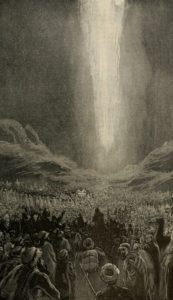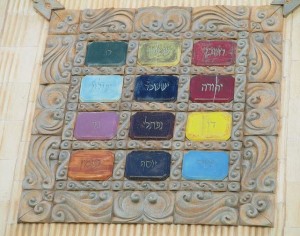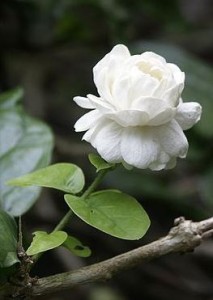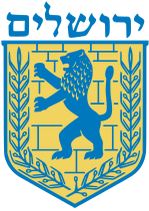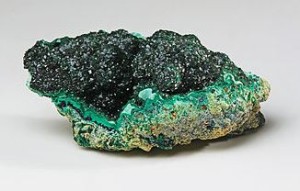This week’s parasha is Beshalach, with its climactic moment being the Splitting of the Sea. Before this, we are told that “God went before them by day in a pillar of cloud to lead them the way; and by night in a pillar of fire to give them light, so that they could journey day and night.” (Exodus 13:21) The Zohar (II, 46b) comments on this that the Patriarchs travelled alongside Israel: the words “went before them by day” refers to Abraham; “in a pillar of cloud” is Isaac; “to lead them the way” is Jacob; “by night in a pillar of fire to give them light” is David. The Zohar then says that these four are the faces upon God’s Holy “Chariot”.
It is the prophet Ezekiel that describes the Chariot in greatest detail. The Book of Ezekiel begins with his famous vision:
And I looked, and, behold, a stormy wind came out of the north, a great cloud, with a fire flashing up, so that a brightness was round about it; and out of the midst thereof as the colour of electrum, out of the midst of the fire. And out of the midst thereof came the likeness of four living creatures. And this was their appearance: they had the likeness of a man. And every one had four faces, and every one of them had four wings… As for the likeness of their faces, they had the face of a man; and they four had the face of a lion on the right side; and they four had the face of an ox on the left side; they four had also the face of an eagle.
Each of the four corners of God’s Chariot has an angel “driving” it. As might be expected for a chariot, beneath each angel is a spinning wheel. The description appears to be speaking not of a simple wheel, but possibly a gyroscope, a “wheel within a wheel” as Ezekiel states (1:16). Each angel has four faces: the face of a man at front, a lion at right, an ox on the left, and an eagle on the back. Understanding the appearance of the animal faces is straight-forward, but whose human faces adorn the angels? The Zohar states these are the faces of God’s beloved Abraham, Isaac, Jacob, and David.
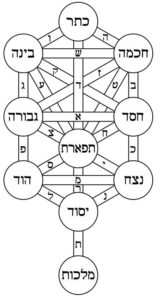
The “Tree of Life” depicting the Ten Sefirot, intertwined by the 22 Letters of the Hebrew Alphabet. Together, they make up the 32 Paths of Wisdom.
Recall that Abraham represents the Sefirah of Chessed, “kindness”; Isaac represents Gevurah, restraint and judgement; Jacob is Tiferet: beauty, balance, truth; and David is Malkhut, “kingdom”. These four Sefirot also correspond to four elements: Chessed is flowing, life-giving water; Gevurah is powerful, burning fire; Tiferet is the spirit of boundless air; Malkhut is the earthy kingdom below. Although there are, of course, Ten Sefirot, these four in particular serve as the major “axes” of the Tree of Life. They have also been said to correspond to the three major dimensions of space, and the fourth dimension of time. (It is worth mentioning that string theory has expanded the number of dimensions to ten—as we might have predicted all along based on the Sefirot!)
Each of the Chariot faces also parallels the major constellations of the Zodiac: first is dli, “Aquarius”, with the face of a human. Three months later comes shor, “Taurus”, the bull or ox. Three months after that is aryeh, “Leo”, the lion. Finally, after another three months is ‘akrav, “Scorpio”, which in ancient times was alternately referred to as the “Eagle” constellation, nesher. The Zohar (I, 24a) points out that the initials of these four constellations and their faces is shinan (שנא״ן), standing for shor, nesher, aryeh, and the nun sofit being representative of the complete human. This is the meaning of the cryptic statement in Psalms (68:18) that “God’s Chariots are myriads, alfei shinan; God is among them, as in Sinai.” Just as at the Splitting of the Sea and at the Divine Revelation at Mt. Sinai that followed, when God “descended” into this world amongst myriads of Chariots, He continues to “mount the Cherubs and fly, gliding on the wings of the winds…” (Psalm 18:11)
The Talmud (Avodah Zarah 3b) offers another mystical meaning of alfei shinan: that God “rides” through 18,000 worlds. This number is derived from the fact that the verse states the number of Chariots is ribotaim, meaning “twenty thousand”, but then says alfei shinan, which can mean “less two thousand”. So, twenty thousand less two thousand leaves 18,000! What are these 18,000 worlds through which God “rides”? The Zohar (ibid.) states that these are the worlds in which God’s Presence dwells. If His Presence dwells there, it implies that there is someone in those worlds to benefit from His Presence! Incredibly, one of the most ancient Jewish mystical texts, Seder HaRuchot, says that God visits these 18,000 worlds and “examines their populations” in an instant! Based on such sources, there have been authorities who’ve suggested there very well may be life on other planets—perhaps 18,000 of them out there in the vastness of the cosmos. Generally speaking, these 18,000 are thought to be strictly angelic worlds, inhabited by the supernal beings. (For a lot more on this, see here.)
Rotating Faces
While each forefather may have excelled in one particular aspect, he was also a complete man who possessed the other traits. Abraham was mainly Chessed, but clearly displayed Gevurah, too, as we see in harsh trials like the Akedah. The Torah says three times that Abraham arose early in disciplined service of God (Genesis 19:27, 21:14, 22:3). Meanwhile, Isaac was Gevurah first and foremost, but is also described with words of lovingkindness in at least three places (Genesis 24:67, 25:28, 27:9-14). Jacob is the perfect balance of the two, hence it is Jacob that embodies the balance and truth of Tiferet. And David is the very reflection of Jacob centuries later. One who reads the Tanakh carefully will see how the lives of Jacob and David mirror each other. (For more on this, see ‘The Mystical Connection Between Jacob and David’.)
This is one reason why each of the faces of the Patriarchs on the Chariot also had a lion, ox, and eagle face. When necessary, each of these great Jewish figures could “put on” their lion face, representing Gevurah, and fight noble battles. [In fact, the gematria of “lion” (אריה) is 216, equal to Gevurah (גבורה)!] At other times, they could be the “ox” peacefully tilling the soil and investing in the development of the Holy Land. As we read in the Tanakh, each of the four figures did tremendous work in the Holy Land, from digging wells to planting trees (and everything in between) in order to make the land flourish and prosper. They could also put on an “eagle” face and “hover over their hatchlings” (Deuteronomy 32:11). The eagle has to teach its chicks some perilous skills like flying and hunting. The figures of the Chariot similarly taught their families and disciples how to navigate the dangers of this material world and live the proper spiritual path. (The Arizal has a fascinating discussion on the eagle and its ability to spot and defeat the snake—symbolic of the evil inclination—in Sha’ar HaPesukim on Mishlei.) Their teachings continue to give us the tools to fly ever higher today.
There is a wonderful lesson here for us. Every good human being works hard like an ox, hovers over their family like an eagle, and defends them like a lion. Behind the face of each person—like the face of each Patriarch, and the face of each angel on God’s Chariot—is the face of a lion, an eagle, and an ox. The spinning wheels beneath these faces symbolize the need to put on a different one of these faces at different times, when the situation calls for it. We have to be able to display both kindness and strength, both beauty and modesty, humility and honour. We must balance all the elements—water, fire, air, earth—within us, and walk the spiritual trail blazed by Abraham, Isaac, Jacob, and David. This is the “pillar of fire” that guided and protected the Israelites in the Wilderness, and continues to guide us and protect us today.

